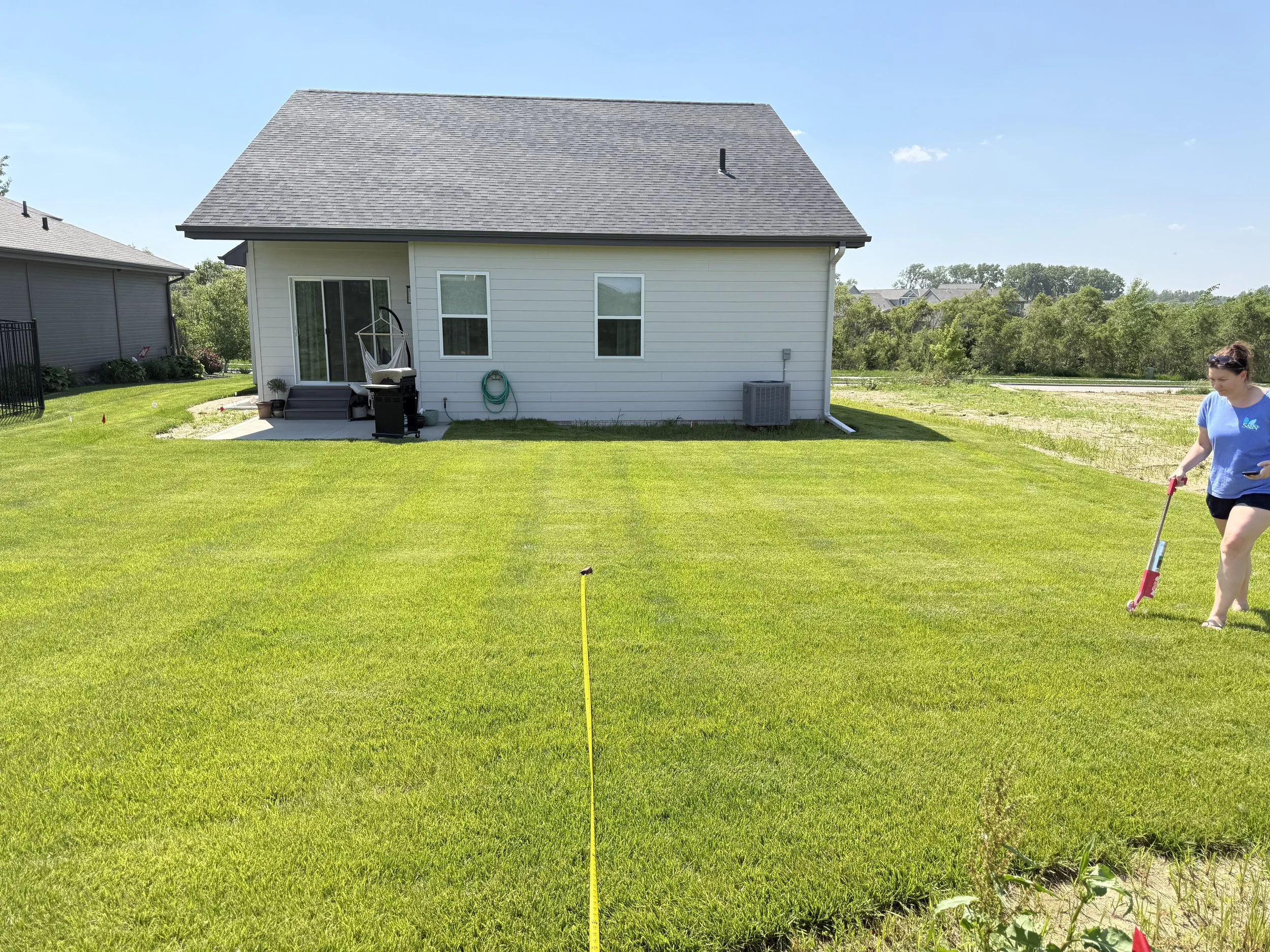What We Look for First When Designing Your Landscape…
What We Look for First When Designing Your Landscape
You're probably expecting me to start with plants.
Or maybe you think I immediately start sketching out where the patio should go, or what color scheme would look best.
But here's the thing: before I even think about what to put in your yard, I need to understand what your yard is actually like.
Not what you want it to be. Not what it could be. What it IS right now.
Because the most gorgeous design in the world is worthless if it fights against the fundamental realities of your space.
The Foundation Assessment: What Actually Matters
1. Where the Sun Actually Goes (Not Where You Think It Goes)
What I'm looking for: The real sun patterns throughout your space, hour by hour, season by season.
Why it matters: A shade plant in full sun dies. A sun plant in shade limps along looking pathetic. Get this wrong, and nothing else matters.
The reality check: That spot you think is "full sun" might only get 4 hours of direct light. That "shady" area might actually get blazing afternoon sun in winter when the trees are bare.
2. How Water Moves (And Where It Goes Wrong)
What I'm looking for: Where water flows during rain, where it pools, where it rushes, where it sits.
Why it's the foundation of everything: Poor drainage kills more plants than anything else. Plus, standing water creates problems that affect your entire property.
The reality check: That low spot where water collects? We need to work with it or fix it before we plant anything there.
3. What Your Soil Actually Is (Beyond "It's Hard to Dig")
What I'm looking for: Soil type, compaction level, drainage characteristics, and existing conditions.
Why it determines everything else: You can't fight soil physics. Clay soil acts like clay soil no matter how much you want it to be loamy. Sandy soil drains fast whether you like it or not.
The reality check: Your soil tells me what will thrive, what will struggle, and what amendments we need to make before planting.
4. How You Actually Live (Not How You Think You Should Live)
What I'm looking for: Real usage patterns, actual lifestyle needs, and honest maintenance capabilities.
Why design must follow function: The most beautiful landscape that doesn't fit your lifestyle becomes a burden instead of a joy.
The reality check: If you hate gardening, I'm not designing high-maintenance flower gardens. If you have teenagers, we're planning for gatherings and activities.
5. What Neighbors and Views Bring to the Equation
What I'm looking for: Privacy needs, good views to preserve, bad views to block, and neighbor relationships.
Why it affects every design decision: Your landscape doesn't exist in a vacuum. What you see and who sees you shapes how you use your space.
The reality check: That perfect spot for a patio might not be perfect if it looks directly into your neighbor's kitchen window.
The Questions I'm Really Asking
About Your Space:
Where does water naturally want to go?
Which areas feel comfortable and which feel awkward?
What's working now, and what's clearly not working?
What views from inside the house matter most?
About Your Lifestyle:
How do you actually move through your outdoor space?
What time of day would you most likely be outside?
Who uses this space and how do they use it?
What's your realistic maintenance bandwidth?
About Your Priorities:
What would make the biggest difference in how you enjoy your yard?
Where should we invest for maximum impact?
What's non-negotiable vs. what's flexible?
What This Assessment Prevents
Design Disasters:
Plants in the wrong light conditions (expensive failures)
Drainage problems that get worse over time (foundation damage)
Spaces that look good but don't function (wasted money)
Maintenance requirements that exceed your capacity (landscape decay)
Ongoing Frustration:
Landscapes that fight your lifestyle instead of supporting it
Maintenance requirements that make you resent your yard
Spaces that look great in photos but don't work in real life
How This Shapes Everything That Follows
Plant Selection:
Sun/shade requirements match actual conditions
Water needs align with natural drainage patterns
Mature sizes fit the actual space available
Maintenance requirements match your capacity
Layout and Flow:
Pathways follow natural movement patterns
Gathering areas are located in comfortable spots
Privacy screening addresses actual sight lines
Functional elements support how you live
The Bottom Line
Good landscape design isn't about imposing a vision on your space.
It's about understanding your space deeply and designing with those realities instead of against them.
The sun goes where it goes.
Water flows where it flows.
Your soil is what it is.
Your lifestyle has real constraints and preferences.
My job is to work with all of these factors to create something beautiful AND functional.
When I start with understanding rather than assumptions, you get a landscape that:
Actually thrives instead of just surviving
Works with your life instead of against it
Solves real problems instead of creating new ones
Gets better over time instead of requiring constant fixes
The pretty stuff comes later. The foundation assessment comes first.
Because a beautiful landscape that doesn't work isn't beautiful for long.
💛 Want a landscape designed around how you actually live?
📲 Let's start with understanding your space and your life → [link]
📍 Serving realistic homeowners in Elkhorn, Bennington, Gretna, West Omaha + surrounding areas
Because great design starts with understanding, not assumptions.
